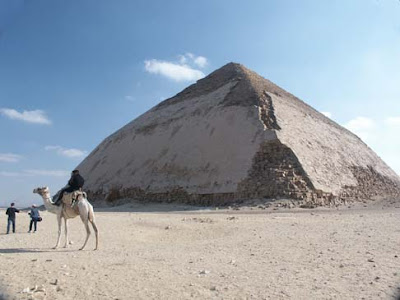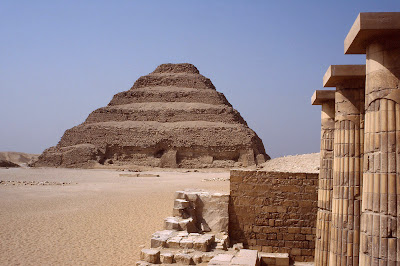The Hanging Church is considered the oldest church in the area of Al-Fustat (Old Cairo).
It is known as Al-Muallaka (the hanging) because it was built on the
ruins of two old towers that remained from an old fortress called the
Fortress of Babylon. It was dedicated to The Virgin Mary and St.
Dimiana
.
It dates back to the end of the 3rd Century A.D and the
beginning of the 4th Century A.D, but it has been reconstructed and
renovated several times since. Some historians believe that it was built
earlier, and it might have been a Roman Temple that was later converted
to a Roman Church, and at a later date still, it became a Coptic
Church. This was proved by the discovery, in 1984, of the scenes, on the
western side of the right aisle of the church, which contained pagan
Roman Gods, but layers of plaster had covered them
.
This church has played an important role in the history
of the Coptic Church because it became the seat of the Patriarchs after
transferring it from Alexandria to Al-Fustat. The 66th patriarch Anba
Christodolos (1039-1079 A.D) was the first Pope to chant the Holy
Liturgy in the church. This was maintained in El-Mullaka Church until
the 14th Century, when it was transferred to Abu Sefein church.

There are 110 icons here, the oldest of which dates
back to the 8th Century, but most of them date to the 18th Century.
Nakhla Al- Baraty Bey gave some of them as gifts, in 1898 A.D, when he
was the overseer of the church.
The French monk Vansleb, who was sent to Egypt in 1671
by King Louis XIV in order to study the state of the churches and the
monasteries of Egypt, mentioned that he had seen on one of the walls of
the Hanging Church, inscriptions written by the hand of the great Muslim
commander Amr Ibn El-As, asking the Muslim people to treat this church
with respect
.
The Plan of the Church:
It takes the shape of a basilica and it has a wooden roof in the shape of Noah's Ark.
The church was once very spacious but it became much
smaller, throughout the ages, after several modifications. Obeid Bin
Khozam did the last modification in 1755 A.D. It now measures 23.5m in
length, 18.5in width and 9.5m in height
.
It consists of the following elements:
1- Entrance known as The narthex.
2- The nave and the two aisles.
3- The three Sanctuaries (located to the east of the
church, the most important being the middle one, which is dedicated to
The Virgin Mary
Some steps lead to the middle entrance. On both sides
of this entrance there is a door that leads to 2 upper floors, dedicated
to the dwelling of the priest.
In front of the entrance there is a vestibule that was used as a resting place for visitors.
Inside, the southern aisle is separated from the nave
by 8 marble columns, linked from above with a wooden architrave, which
is supported on arches. The northern aisle is also separated from the
nave by 8 marble columns but there is no architrave
.
Nearly in the middle of the southern aisle there is a
door, which leads to a small church with a sanctuary. Inside this small
church there is a baptistery, which is a deep basin of reddish granite,
which probably dates back to the 5th Century. It is decorated for the
sign of water in Hieroglyphics.
Of the three sanctuaries situated on the eastern side,
the most important is the middle one, which is dedicated to the Virgin
Mary. In the centre of this main sanctuary there is an altar made of
marble. Above it there is a wooden dome, supported by 4 marble columns,
and decorated with religious scenes, such as Jesus on his throne
surrounded by the four evangelist saints, the disciples, and angels.
In front of the middle altar, in the nave of the
church, is a pulpit that stands on 15 columns, decorated with reliefs
and mosaics, symbolically representing Jesus, the 12 Disciples, John the
Baptist and the Virgin Mary.
There are 7 altars in the Church, 3 of them situated in
the main sanctuary, and 3 located in the right sanctuary, among which
is the altar of Tecla Hymanot, the Ethiopian Saint, and another that was
recently discovered in the northern side.



























.svg.png)
